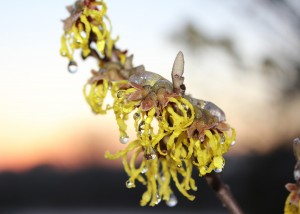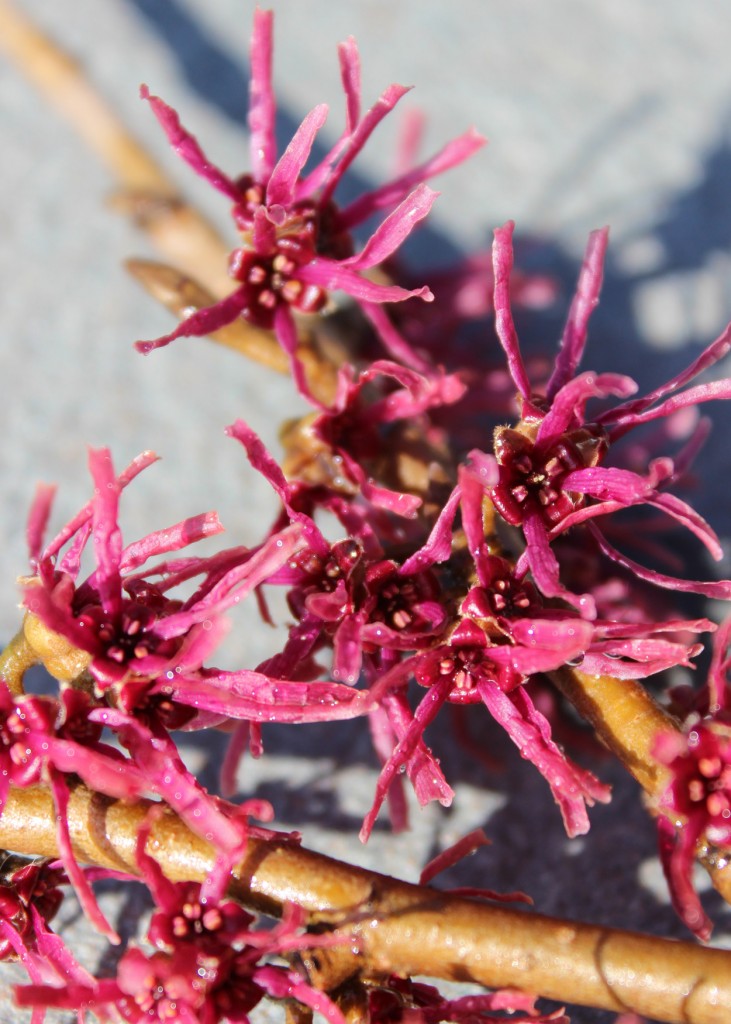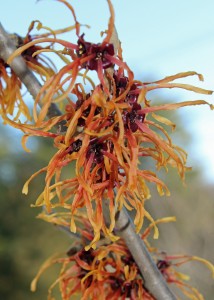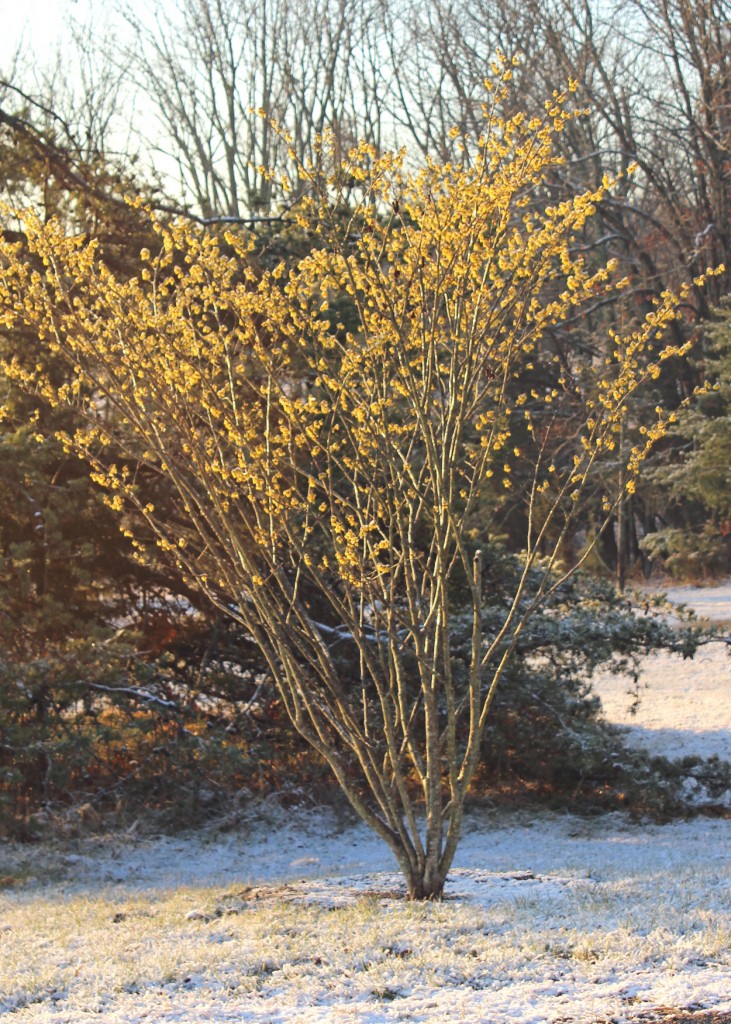Hamamelis species, Witch Hazel

Not much to say except color, COLOR, COLOUR! The Witch Hazel is an amazing native that blooms in the late winter to early spring. There are also cultivars that are Japanese hybrids, but are just as beautiful. The flowers are very durable in the sense that they can with stand the crazy temperature changes of warm to below freezing. On the warm days the Witch Hazel flowers seem to resemble more of an octopus with many curled tentacles than a flower when closely viewed. When temperatures drop again the flowers curl back up on themselves and seem to go into hiding until the sun comes shining again. Another  great attribute is that they have bright fall foliage color, yellow-orange or reddish-purple depending on the cultivars.
great attribute is that they have bright fall foliage color, yellow-orange or reddish-purple depending on the cultivars.
The Witch Hazel is one of the earliest flowering deciduous tree and has fragrant flowers , which makes for a must have in any garden. They can be planted as a focal point for a flower bed or tucked in with existing trees. For the best color wow, plant Witch Hazels against a solid back drop, like a Cryptomeria . They are also nice when planted in herbaceous perennial bed, with something like Lenten Rose, Helleborus orientalis , another early bloomer companion.

 Statistics
StatisticsKey feature: Year Round Interest
Plant type: Understory, flowering tree/ large shrub
Deciduous/evergreen: Deciduous
Cold hardiness zones: 4-8
Light needs: Full sun to partial shade
Water Needs: Requires regular watering till established.
Average landscape size: 6′ to 10′ tall
Growth habit: Upright, vase shaped
Special features: Winter flowering
Landscape uses: Accent flowering tree, native gardens. focal point
Flower color: Shades of yellow, yellow- orange, purple, red and green
Flowering season: Late Winter/Early Spring
Foliage color: Green